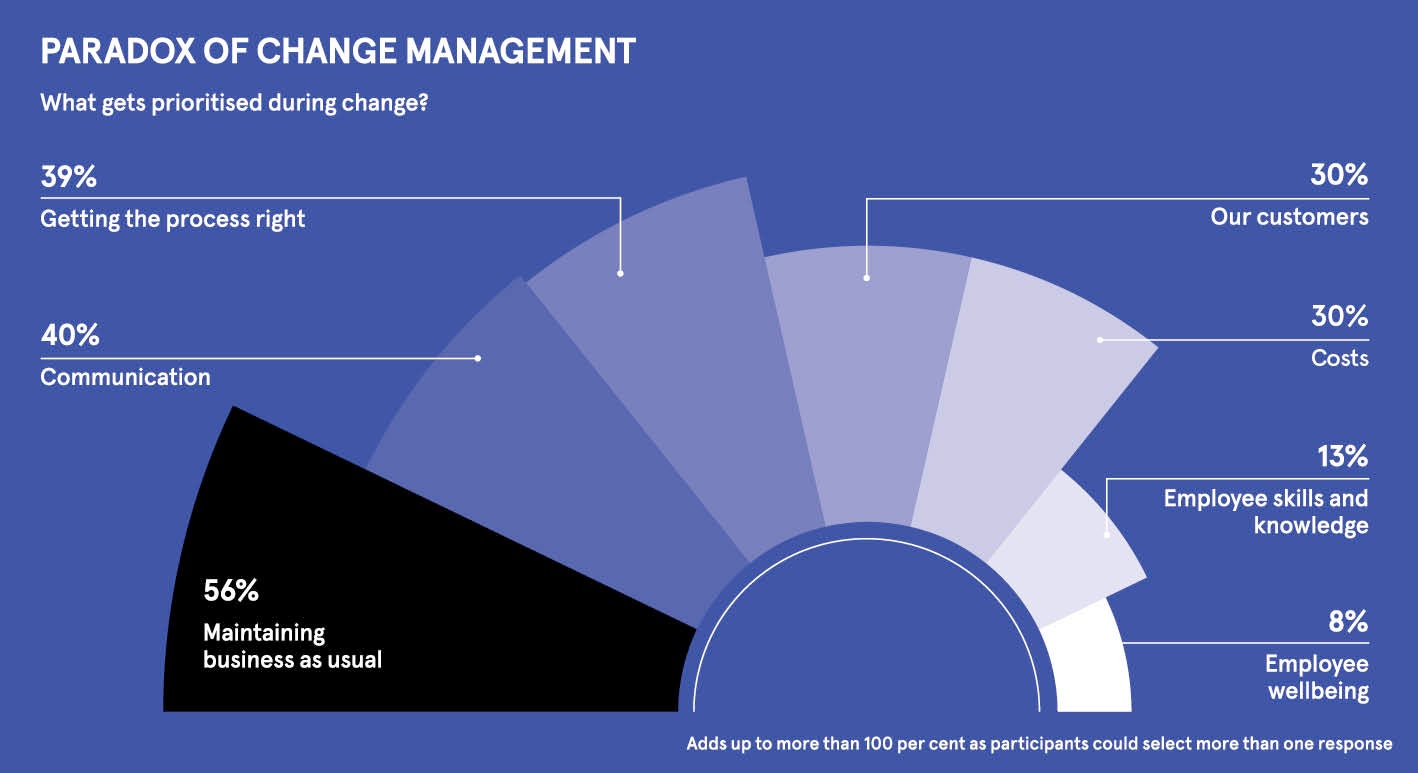
Mergers and acquisitions (M&A) are an essential aspect of businesses’ strategies, but many firms struggle to integrate themselves successfully as newly paired organisations. From a leadership perspective, failing to take account of the people elements of change can quickly lead to serious problems, including financial losses and employee disengagement.
Some 56 per cent of firms focus on maintaining business as usual from an operational standpoint during change, according to research by people performance consultancy Lane4. But only 8 per cent make a serious effort around employee wellbeing.
“While businesses understand the concept of getting the human element right following a merger or acquisition, they often don’t know where to start in practice,” says Alison Maitland, director of research and product at Lane4.
Among the most commonly neglected areas to address is cultural imprint. Business leaders regularly underappreciate the significance of how teams retain their culture for long periods after transactions have been completed. While organisations and their human resources departments tend to be conscious of the need to integrate two cultures as an M&A process initially unfolds, often the issue falls out of consideration after a sufficient amount of time has passed.
In practice, the distinct cultures found within two organisations that are combined into one generally leave lasting imprints that can remain significant long after a merger or acquisition has formally taken place.
“These cultural legacies remain strong and ought to be considered carefully as newly combined identities are being forged,” explains Dr Maitland. “Establishing a common identity that is meaningful and recognisable by all employees is vital for merged operations, if they are to avoid disaffection.”
Secondly, firms must remember that in M&A there are no victors or vanquished parties. It is absolutely imperative for leaders of newly combined operations to find ways to negate narratives of a merger or acquisition being a story of winners and losers.
“Allowing any ‘them and us’ attitudes to emerge and take root can be highly destructive,” says Dr Maitland. “An employee who becomes part of an organisation by virtue of having had their company acquired or merged should not be disadvantaged.
“It is the responsibility of talent management teams to ensure that employees are not only regarded as being on a level playing field with their peers from across the enlarged business, but that it is widely understood progress and promotions are attained on merit alone.” Promoting people from both sides of a combined operation, where appropriate, can make a huge difference.
Leadership figures should also be conscious of the fact that the aftermath of a merger or acquisition will typically be a time of heightened tension among the members of a newly combined workforce. Worst-case-scenario thinking can quickly become commonplace where employees view themselves, rightly or wrongly, as competing with their peers for a diminished number of roles.

Managers, leaders and HR teams all need to provide proactive support to employees during these moments, which can be acutely stressful. Communication is a vital part of this picture, with uncertainty often a major source of worry and tension among newly merged workforces.
“Providing employees with a realistic merger preview that details the changes planned can go a long way towards delivering highly valuable reassurance,” Dr Maitland notes. The communication process must be two way.
A final overlooked aspect of M&A is the informal conversations among individuals who stand to be impacted. “These conversations can be difficult to account for from a management perspective, but they can also be central to how opinions are formed about the various elements of the process,” says Dr Maitland.
A focus on informal aspects of communication can be vitally important for leaders because spontaneous conversations are influential once restrictions on discussing the matter are lifted. Ensuring there are clear and accurate stories to tell in informal and unstructured moments and settings can help generate positivity and optimism about the changes taking place as two organisations are formally brought together. However, for this to happen, there has to be a conscious decision taken by leaders to engage in informal conversations about the subject.
Once a merger or acquisition has taken place, there is an often underestimated scope for individuals to lead by example and demonstrate a sense of unity to the rest of their teams. This can be done in any number of ways, but visible examples of collaboration and unity, such as having two managers work out of the same office, can make a valuable contribution to a subsequent integration process.
“It is critical for leaders in these circumstances to match their words with their actions and to ensure that the messages they send out to employees are consistent across all formal and informal settings,” Dr Maitland explains. “It is only by doing so that all the members of a combined workforce will be encouraged to believe in the merger or acquisition moving forward.”
Lane4 works with businesses planning M&A by conducting a full audit of their transformation, culture, change readiness and leadership to understand the context of the change, then it accelerates their change through an effective process that creates executive alignment, and engaged and resilient teams.
This careful approach is essential as, even when the strategic rationale of M&A appears obvious, there are a plethora of challenges leaders struggle with. Only by considering in detail how best to integrate the hidden, as well as the more visible elements of the process, can real success be achieved.
To download the full research paper All change is not equal please visit lane4performance.com/change


